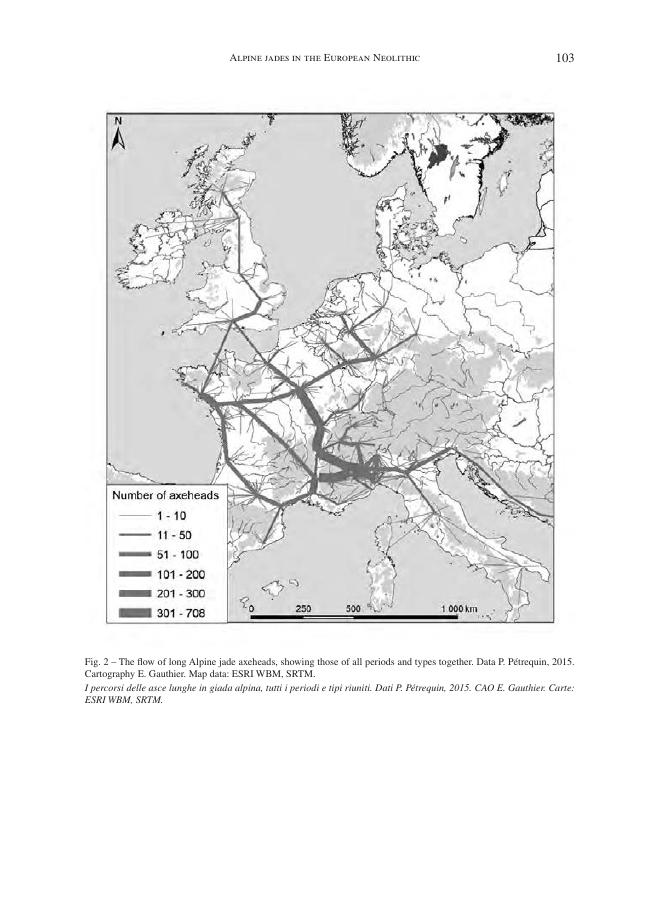Alpine jades in the European Neolithic
P. 99-107
The ANR-funded programmes JADE 1 (2007-2011) and JADE 2 (2013-2017) investigated the production and the extraordinary diffusion of axeheads (large and small) made of Alpine jades on a Europe-wide scale. The phenomenon began during the middle of the sixth millennium BC and ended over the course of the third millennium BC. The precious jades (jadeitite, omphacitite and fine-grained eclogite) were exploited at high altitude as well as among the torrent cones of the two Italian Alpine massifs, Mont Viso and Mont Beigua. Two technical traditions of shaping roughouts—one involving percussion, the other sawing—supplied networks of contacts that were orientated in different directions. The products travelled over much of Europe, with a few reaching central Europe and the Balkans as far as the Black Sea, moving along routes and at distances up to 1800 km as the crow flies.
The authors set out here to explore the complexity of the networks over which the axeheads travelled and to attempt to account for the causes of this spatially extensive phenomenon that endured for nearly three millennia. The importance of elites' social imagination is the best way to understand the religious systems that were in play: these systems determined that only powerful individuals were allowed to handle large Alpine axeheads, depositing them in hoards consecrated to the gods. This explanation accounts for the major phase of Alpine axehead movement that began around 4700 BC with the flow of axeheads towards Brittany and which ended around 3800-3600 BC with the arrival of axeheads in Germany, Britain and Ireland.
Our hypothesis thus stands in stark contrast with the commonly-held (and unsubstantiated) view of some geologists that Alpine axeheads were made from at cobbles taken from torrent beds and that they moved, as ordinary prestige goods, in a ‘down-the-line' fashion. Our hypothesis offers a new perspective on Neolithic societies in western Europe, seeing them as inegalitarian in nature, with epicentres in Brittany and the Paris Basin. These two regions had a mythology that featured jade axeheads as being male symbols.[Publisher's text]
-
Articoli dello stesso fascicolo (disponibili singolarmente)
-
Informazioni
Codice DOI: 10.32097/1118
ISSN: 2282-457X



